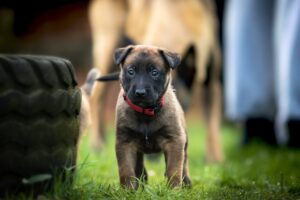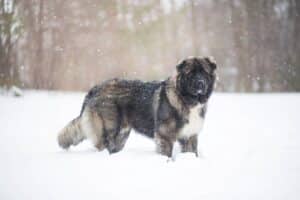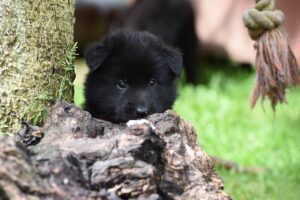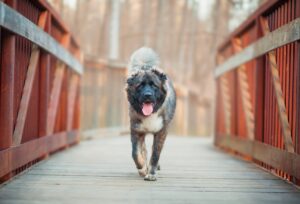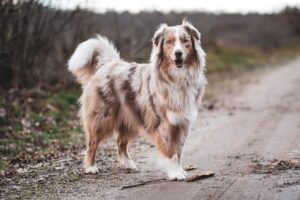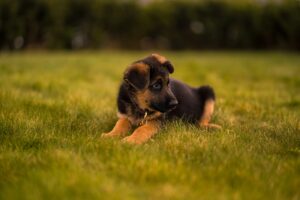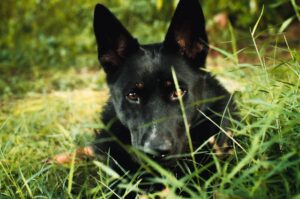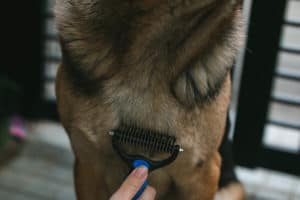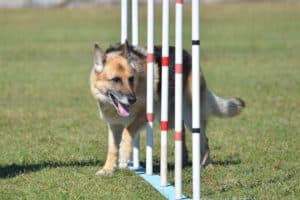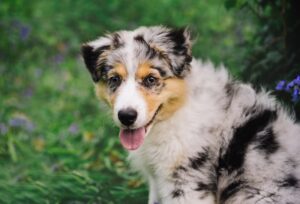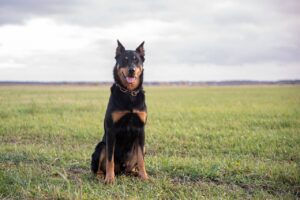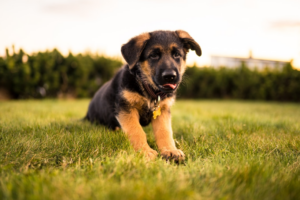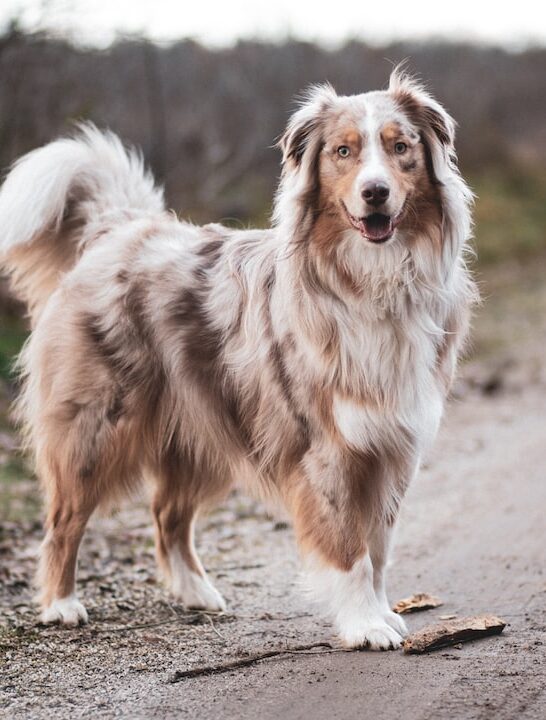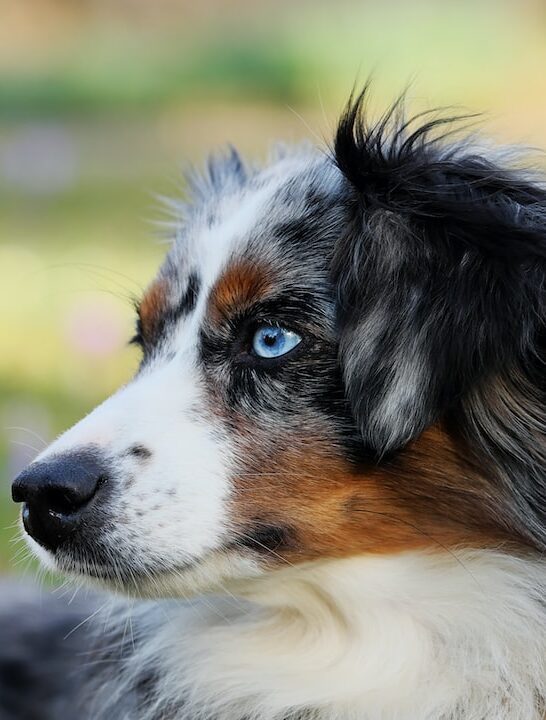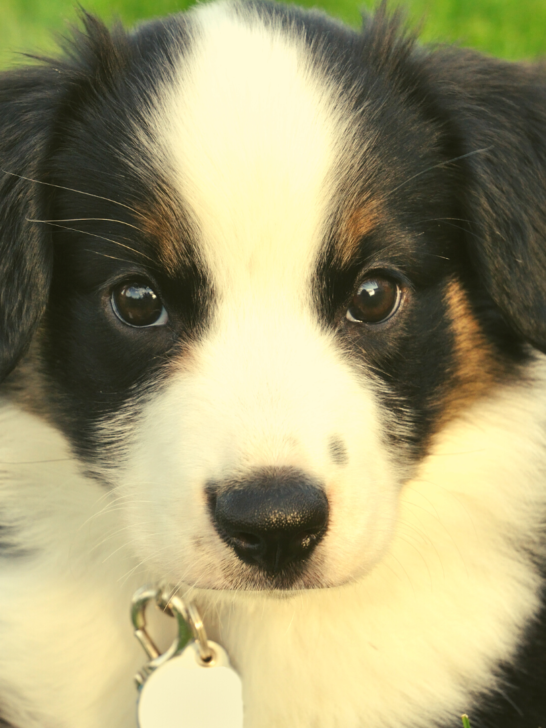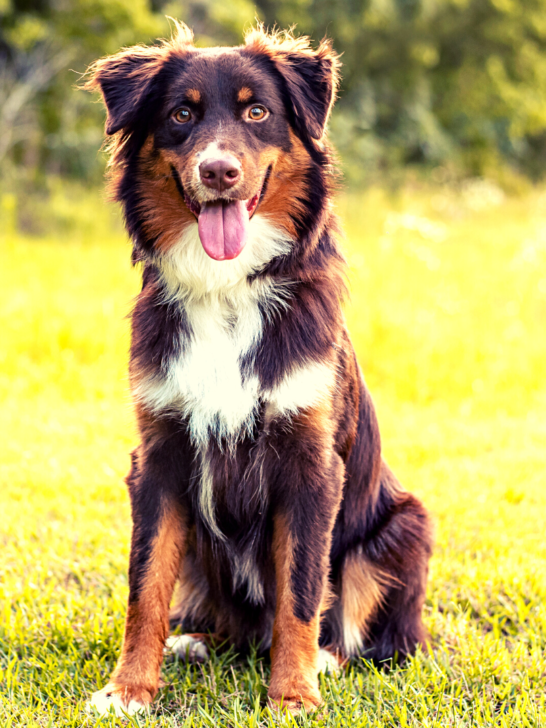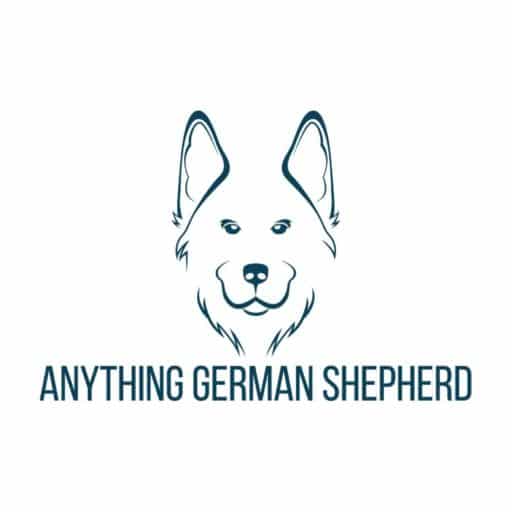When Does an Australian Shepherd Stop Growing? What to Expect as Your Aussie Grows Up!
The Australian Shepherd is bred in two sizes: standard and miniature. While the latter is significantly smaller than the former, they both have similar growth rates.
Whether you own a standard or mini Aussie, they’ll be fully grown within 12-16 months.
Aussies, like many other dogs, experience the most significant growth spike during their early months. Additionally, ever since they are two weeks old, they start to gain weight rapidly.
Monitoring your puppy’s growth and development is crucial. Determining when your Australian Shepherd stops growing will allow you to restrict too much exercise until your dog is fully developed.
Below, we explain why being aware of your Australian Shepherd pup’s growth is mandatory to prevent lifelong health problems. We also share some tips on how to recognize if your furry friend follows a healthy growth pattern.
Let’s jump straight into it!
Male Australian Shepherd Growth Chart
| Age | Weight Range | Height Range |
|---|---|---|
| 2 months | 5-7 lbs. | 3″-5″ |
| 2 ½ months | 15-19 lbs. | 7″-11″ |
| 3 months | 21-27 lbs. | 11″-13″ |
| 4 months | 28-35 lbs. | 12″-14″ |
| 5 months | 34-43 lbs. | 13″-15″ |
| 6 months | 38-49 lbs. | 15″-17″ |
| 7 months | 44-55 lbs. | 16″-18″ |
| 8 months | 47-58 lbs. | 17″-19″ |
| 9 months | 49-63 lbs. | 18″-20″ |
| 10 months | 51-65 lbs. | 19″-21″ |
| 11 months | 53-67 lbs. | 20″-22″ |
| 1 year | 54-68 lbs. | 20″-23″ |
| 2 years | 56-69 lbs. | 20″-23″ |
Female Australian Shepherd Growth Chart
| Age | Weight Range | Height Range |
|---|---|---|
| 2 months | 4-8 lbs. | 3″-5″ |
| 2 ½ months | 10-15 lbs. | 7″-11″ |
| 3 months | 14-21 lbs. | 11″-13″ |
| 4 months | 19-28 lbs. | 11″-14″ |
| 5 months | 23-35 lbs. | 12″-14″ |
| 6 months | 26-39 lbs. | 13″-15″ |
| 7 months | 29-44 lbs. | 14″-16″ |
| 8 months | 31-47 lbs. | 15″-17″ |
| 9 months | 33-49 lbs. | 16″-18″ |
| 10 months | 34-51 lbs. | 17″-18″ |
| 11 months | 35-52 lbs. | 18″-20″ |
| 1 year | 36-54 lbs. | 18″-21″ |
| 2 years | 37-55 lbs. | 18″-21″ |
When Does an Australian Shepherd Stop Growing?
The eventual size of your Australian Shepherd will greatly influence how long it takes them to stop growing.
In general, small dog breeds finish growing faster than larger breeds. The Australian Shepherd is no different.
- A mini Australian Shepherd dog will be fully developed in one year.
- A standard-size Australian Shepherd may take as long as 16 months to grow up.
Compare this to a related Shepherd breed like the German Shepherd, which can take up to three years to finish growing!
Watch an Australian Shepherd Puppy Grow Up
This adorable owner-made YouTube video shows how quickly a standard Australian Shepherd puppy can grow up.
The video takes you through day by day, all the way up to the point when the puppy is eight months old. As you’ll see, there’s a pretty dramatic transformation!
Did you know? 💡
Australian Shepherds aren’t Australian. They most likely came from the Basque region of Spain and were brought to the United States by Basque shepherds.
What Is the Size of an Adult Standard vs Miniature Australian Shepherd?
According to the American Kennel Club (AKC), the average Australian Shepherd weighs between 40 and 65 pounds and stands 18 to 23 inches tall (paw pads to shoulders) when fully grown.
Also, adult standard Australian Shepherd male dogs tend to outweigh adult female Australian Shepherds by up to 15 pounds and stand at least two inches taller.
This is a difference of anywhere from 20 to 45 pounds and five to 10 inches in height.
Contrast this with the much smaller size of the miniature Australian Shepherd, which, according to the AKC, weighs between 20 and 40 pounds and stands 13 to 18 inches tall when fully grown.
Adult miniature Australian Shepherd male dogs tend to outweigh their female counterparts by up to 10 pounds and stand at least one inch taller.
Why Is the Growth Cycle Longer for a Standard-Size Australian Shepherd?
As previously mentioned, a standard-size adult Australian Shepherd is going to have a lot more growing to do than a miniature Australian Shepherd. Going from a tiny newborn puppy to a full-size adult dog takes time!
The larger the dog, the more growth must take place, including bones, skeletal system, soft tissues, and organs.
So, while you can expect your small to mid-sized Australian Shepherd puppy to complete the necessary growing in 12 months, your medium to large-sized Australian Shepherd puppy is going to need more time.
Did you know? 💡
An Australian Shepherd named Bunk was a star of early Hollywood. He appeared in many westerns with Jack Hoxie in the 1920s and into the 1930s.
Why Is It Vital to Know When My Australian Shepherd Is Done Growing?
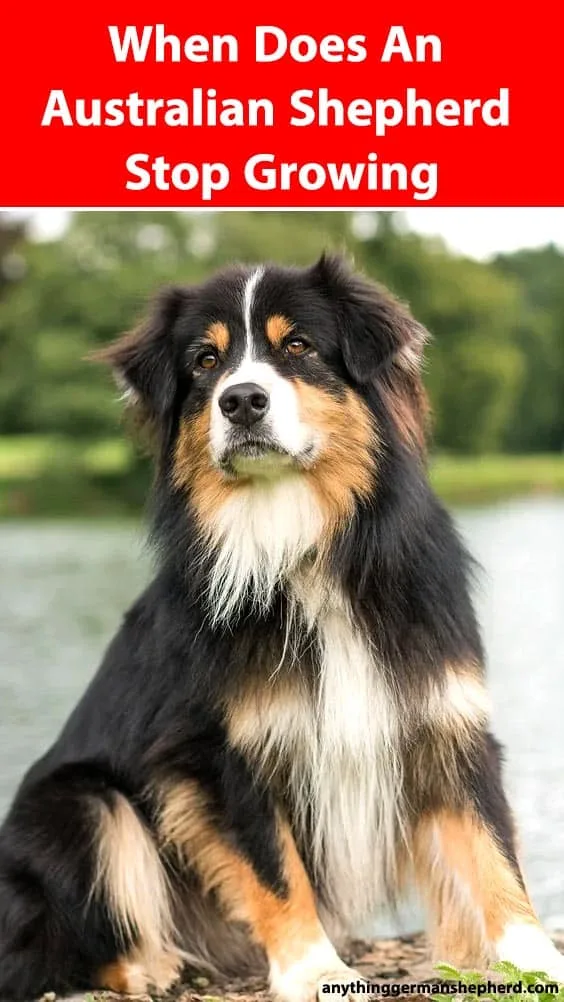
According to the Canine Health Information Center (CHIC) database, Australian Shepherds are prone to inherit two potentially disabling joint malformation issues: elbow dysplasia and hip dysplasia.
Both joint issues can be prevented with pre-breeding screening tests. However, not every breeder orders them.
The term “dysplasia” basically translates to mean “abnormal growth.” When that abnormal growth occurs in a dog’s major joints — such as the elbow and hip — it can mean a lifetime of pain or lameness.
That’s why it’s so crucial for pet owners to get familiar with their puppy’s growth and weight charts.
Did you know? 💡
More commonly than other breeds, Australian Shepherds have two different colored eyes. It’s called heterochromia.
Canine dysplasia may be inherited, but it can also be worsened by Australian Shepherd growth spurts or prematurely taking on strenuous exercise.
In other words, your Australian Shepherd may have a mild case of dysplasia that will get much worse if your dog grows too fast or exercises too vigorously before they’re done growing.
How Can You Know Your Australian Shepherd Dog Is Done Growing?
There’s only one guaranteed way to know your Australian Shepherd is done growing. This method is fully reliable and applies regardless of gender or whether you have a standard or a miniature Australian Shepherd.
The one and only way to confirm your Australian Shepherd has stopped growing is to have your dog’s veterinarian take X-rays of the long leg bones.
At the top of each long leg, bone meets an area of cartilage called the “growth plate.” This growth plate is like the computer of the dog’s leg. It sends out instructions, such as “keep growing” or “stop growing.”
The type of instructions each growth plate sends out can be changed based on:
- what (and how much) your dog eats
- type and duration of exercise
- timing of a spay or neuter surgery
- individual and breed canine genetics
When your Australian Shepherd has stopped growing for good, the growth plates will harden and close. It means there will be no more growth instructions sent out.
At that moment, your dog is as tall as it will ever get.
Now, remember that your Aussie may still have some filling out to do to reach their full adult weight. The growth plates only affect your dog’s height.
Why Would an Australian Shepherd Dog Grow Too Much?
Several reasons can explain why an Australian Shepherd dog might grow beyond what is considered healthy. Among those, two of the most common culprits are
- feeding it an unsuitable diet
- too much exercise
Let’s take a closer look at those issues.
Feeding the Wrong Diet
One of the main reasons an Australian Shepherd dog might keep growing is if the dog is fed the wrong diet.
- A miniature Australian Shepherd puppy should be fed a small breed complete and balanced puppy food until the age of 12 months.
- A standard-size Australian Shepherd puppy should be fed a medium breed complete and balanced puppy food until at least 12 months of age.
If you need more clarification, your veterinarian can instruct you when to transition to an adult-balanced diet.

Too Much Vigorous, Sustained Exercise
Australian Shepherds are lively, intelligent, energetic dogs.
This breed was originally developed for livestock herding. As such, these herding dogs are used to being on the go all day, every day — often for long stretches of time.
When bringing home an Aussie puppy, you can count on it needing a lot of exercise! This need will only increase as your puppy develops more coordination and begins to explore the great outdoors.
These dogs love anything that involves running, jumping, and catching.
However, caution is needed when doing strenuous exercise.
If your dog accompanies you on a long hike or takes on anything else that can put pressure on growing joints, it can result in damage to the soft cartilage growth plates at the top of each leg bone.
If the growth plates are damaged before they harden and close, they won’t send out the proper instructions to the bones regarding when to stop growing.
In such a scenario, you risk having a dog that goes through uneven growth on either side of the body.
Did you know? 💡
Native Americans called Australian Shepherds “ghost eye” and considered them sacred.
Our YouTube Video On The Growth Of An Australian Shepherd
Final Thoughts
You can expect your Australian Shepherd pup to reach their full height and weight in about 12 months. Pay attention to your furry friend during every step of their growth cycle, from puppy to adult.
Contact your veterinarian if you notice stunted growth, abnormal weight gain, or similar problems.
If your Australian Shepherd appears to be having joint pain or movement issues, the best thing to do is to take X-rays — this is the only way you’ll know what’s going on.
During puppyhood, watch for signs of lameness, including favoring one limb, limping, whimpering or whining, licking at an area, not wanting to play, or refusing to get up.
Countless options are available today to help Australian Shepherds suffering from joint or growth issues.
You should always contact your veterinarian when looking at treatment options. They’ll be the safest and best resource you can find.

